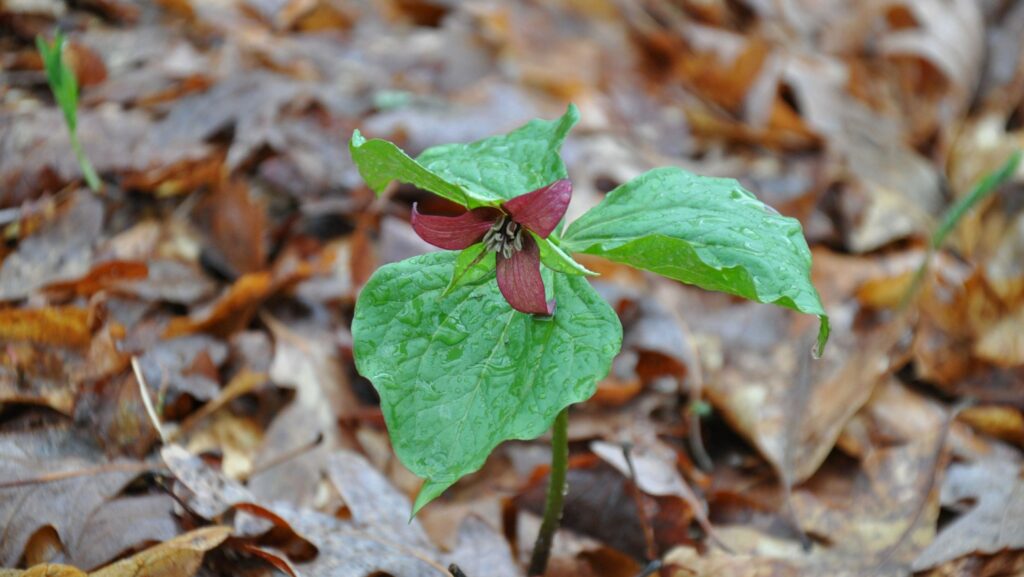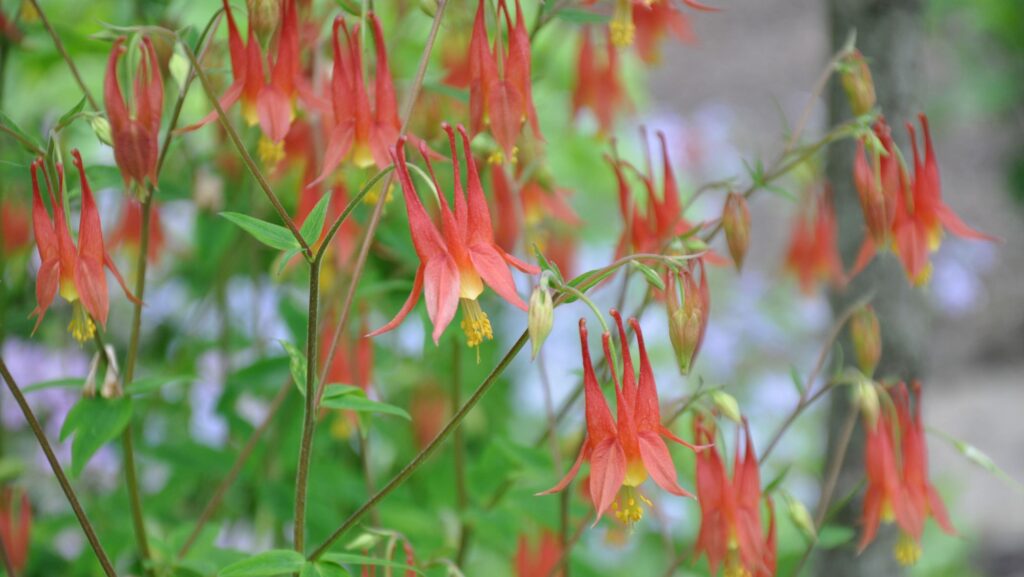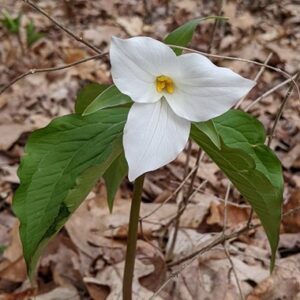
Trillium erectum (red trillium)
The first wildflowers of the season are always a welcome reprieve after a long winter, and March through May are the prime months to spot these fleeting native beauties. These diverse and ecologically important blooms (early pollen and fruit sources for bees and reptiles) have a very brief period of time to blossom and set seed before tree and shrub foliage fill out the canopy and block sunlight absorption. They can survive frost and take advantage of the timing before they are out-competed by other plants that return later in the spring season. While bloom time is variable depending on species and weather, bloom duration can be as short as a few days for some or up to a few weeks for others — so don’t delay that walk in the woods and be sure to watch your step!

Aquilegia canadensis (wild columbine)
On the Wildflower Trail, you can spot a sampling of some notable spring ephemerals such as wild columbine (Aquilegia canadensis), hepaticas (Hepatica spp.), dutchman’s breeches (Dicentra cucullaria), squirrel corn (Dicentra canadensis), bloodroot (Sanguinaria canadensis), early meadow rue (Thalictrum dioicum), spring beauty (Claytonia virginica), and show-stopping trilliums (including Trillium grandiflorum, T. erectum, and T. sessile), all brought back to the area by Arboretum volunteers and staff over the multi-year restoration of the Arboretum’s old-growth forest patch.
- (Sanguinaria canadensis) bloodroot
- Claytonia virginica (spring beauty)
- Trillium grandiflorum (great white trillium)
Feel free to observe and photograph blooms from the trails but please tread lightly and make sure to leave the plants for wildlife and pollinators to enjoy! Visit our Natural Lands page for a map and more information about the Wildflower Trail.



